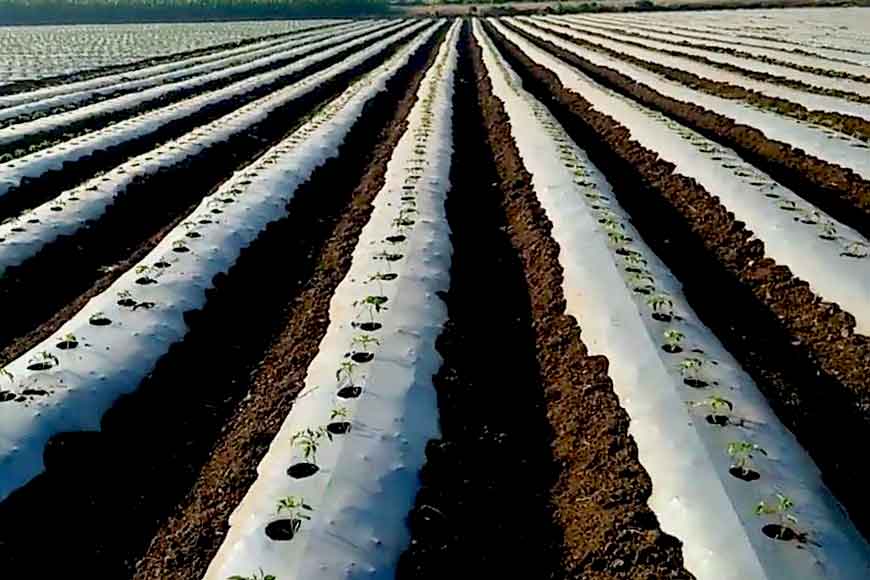New paddy cultivation technique brings profit to Balurghat

‘The youth of a nation are the trustees of posterity…..’ Three youths from Balurghat proved it right yet again by creating rice seedlings through the mulching process and thereby showing new hope of employment opportunities. They have been able to gain huge profits through extensive farming through little investment. The Department of Agriculture has stood by them to improve the economy of the area.
Pradeep Swarnakar, Liton Barman and Vaidya Barman are creating employment opportunities for the unemployed youth. They are making paddy saplings in four areas including Duimur of Balurghat and Boaldar through mulching mechanism. Although they had their own land, it was not possible to cultivate there. Therefore, they were forced to take land from other farmers under certain conditions. The cultivation of rice saplings is being done by using a little water through the mulching method.
The mulching process of cultivation involves certain specific methods. A sheet of thin plastic is spread throughout the land and an inch of soil is mixed with fertilizer. Thereafter, water is showered to make the soil semi-liquid. Then the germinated seeds are spread throughout the ground. When rice seeds are wet, the soil mixed with mild dung extract is poured over. The whole land is covered with transparent or light plastic allowing sunlight to penetrate. The land has to be away from the influence of wind and water underneath the soil does not dry up. Sometimes, water is supplied if required. Plastics are removed from the land after 22 days. Within a span of three days, rice saplings come up. With the help of a 4-inch-long machine, the seeds are spread on the land. This method has turned out to be highly beneficial as it increases the yield and reduces the cost of cultivation at the same time.
The State Agriculture Department has started making saplings through this mulching process since last year. They also helped the youths with the mulching machines. The mulching method will increase the yield by 25 percent and will reduce the cost of cultivation to half. The farmers in the area are now using this method and getting good results.









